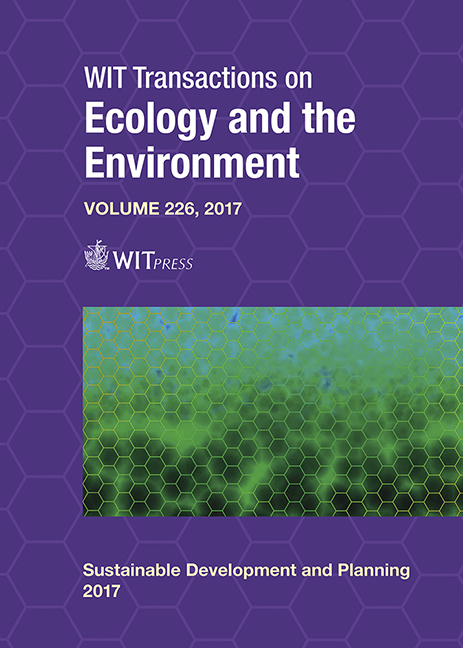DESIGNING URBAN BUILDING BLOCKS AROUND SOLAR PLANNING PRINCIPLES
Price
Free (open access)
Transaction
Volume
226
Pages
12
Page Range
679 - 690
Published
2017
Size
878 kb
Paper DOI
10.2495/SDP170591
Copyright
WIT Press
Author(s)
ANDREAS SAVVIDES, CONSTANTINOS VASSILIADES
Abstract
This paper aims to determine the optimum geometry of the building blocks in order to ensure the viability of specific building integrated solar systems (BISTS, BIPV) in the current urban fabric. The research starts with an analysis of the fabric’s geometry and characteristics as they are defined by law, and through a literature review, explores the possibilities of building integration of active solar systems in the urban fabric, whilst similar attempts of research are reported and analyzed. For the main body of the research, a simple set of rectangular building blocks is created, and through the configuration of some parameters the most viable geometry is determined, in order to have the most possible insolation on the buildings’ roofs and facades. The parameters are the ratio between the length and the width of the building blocks, the width of the streets between them, the height of the buildings and the geometry of the buildings that can be accommodated in the proposed building blocks. The buildings’ geometries are determined in ways that they could accommodate apartments in a viable way in order to create sustainable neighborhoods. The insolation, which reflects the potential for the building integration of active solar systems, is calculated with the use of digital modelling. The ultimate aim of this work is to present and analyze the limitations and problems of the integration in the urban fabric, and propose research-based solutions, which could establish a guide that gives guidelines for building integration of active solar systems on a neighborhood level. Further research will determine the ratio of the building’s usable area/solar system’s area if the geometry of the building is optimal, and the findings will be applied to the actual urban web of Cyprus in order to be optimized. It will also be investigated whether the solar urban design reduces the ability of the existing or potentially existing urban fabric to cover the needs of the city into residential units.
Keywords
solar planning, urban design, building massing, building insolation, sustainable development





